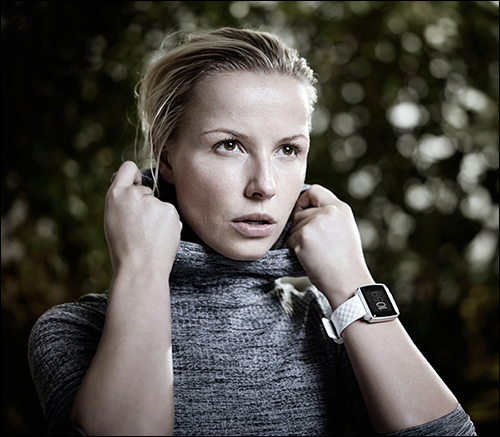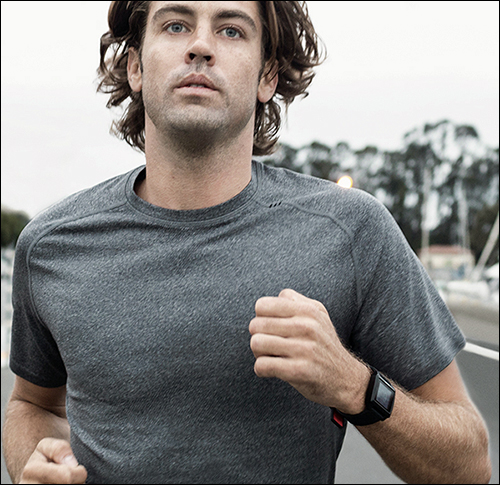MLC, National Australia Bank‘s wealth-management division, provides investment services to institutional customers, as well as individuals. It also sells life insurance, which is the type of product around which the bank has trouble engaging with consumers, according to J. Patrick Bewley, the CEO of Big Cloud Analytics (BCA), a three-year-old U.S. startup that provides predictive-analytics services based on data streams generated by Internet of Things devices.
“When you sign up for life insurance,” Bewley say, “you’re highly engaged [with the insurance provider] because they ask you so many questions and you might have to go to a doctor, get blood drawn, etc. But then, for decades, all you do is send in a check.” During those years, the life-insurance provider has little insight into the policyholder’s level of fitness. And when customers revisit their life-insurance policies, it is usually to shop for another provider charging a lower premium.

In 2014, BCA began working with MLC to develop a program through which the insurance provider could engage with its customers by collecting information regarding their fitness level and then rewarding their consistent exercise. The result is MLC On Track, a program through which customers are issued the Basis watch, which has an integrated optical pulse-rate monitor to measure their heart rate and a three-axis accelerometer to track their movements. They are then asked to strive for specific health goals in order to receive up to 10 percent off their annual premiums.
MLC launched MLC On Track for new customers in November 2015. Via e-mail, an MLC spokesperson said that the company assesses whether or not to charge new customers a fee of AU$250 for the Basis watch, based on information provided on the insurance application. The spokesperson did not disclose what information is used to make that determination, but did note that MLC provides the watch at no charge to the majority of applicants.
Customers are asked to wear the watch for at least 18 hours per day. Those who exercise for one hour daily or walk 6 to 8 kilometers (3.7 to 5 miles), sleep for seven to nine hours each night, and record a resting heart rate of less than 85 beats per minute are eligible for discounts based on a scoring system. Customers who attain the highest score within the first 160 days of using the watch receive a 5 percent premium discount, while those who repeat the high score during the following 160 days receive another 5 percent off.
According to the MLC spokesperson, the average life-insurance premium is AU$2,000 per year, so the upper savings potential is $200 annually for the life of the insurance policy. Based on this, customers who must purchase the Basis watch may recover their costs in a little more a year.
Prior to developing MLC On Track, BCA had already been working with Intel—which acquired the watchmaker, Basis Science, in March 2014—to use Basis watches in developing and testing its data platform, called COVALENCE. Bewley says that while COVALENCE is device-agnostic, the Basis watch generates a rich data stream that “makes it better than other wearable devices from a data-analytics perspective.” Basis tracks body temperature, ambient temperature, skin perspiration and movements. A third-party study showed that the accuracy of the watch’s optical pulse-rate monitor is comparable to that of an EKG machine, Bewley reports.
Before each new customer can begin logging data from his or her new Basis watch into the MLC On Track program, that person must register via an online enrollment form. Here, BCA presents details of the program. The customer must consent to MLC’s privacy and data-sharing policies, and he or she completes a survey that includes questions about that person’s age, gender, exercise regimen and medical history. The customer then starts to use the watch, which synchs to the Basis app running on the user’s smartphone or computer, via a Bluetooth connection. From there, the data is encrypted and forwarded to the cloud, where BCA collects it. “Then the data starts to flow into our platform,” Bewley states.

BCA employs an algorithm to create a unique profile based on each user’s biometrics. That profile is designed to prevent a customer from attempting to fool the system by giving the watch to someone else to wear while exercising. If the COVALENCE platform detects that someone other than the insured is wearing the watch, Bewley says, it flags the account so that MLC can investigate.
BCA charges MLC a monthly fee based on the quantity of devices from which it is collecting data. To date, MLC says, it has enrolled thousands of customers into the MLC On Track program.
According to Bewley, COVALENCE provides more than just a straight log of activity per user. “For the insurer, we do population segmentation—that is, cohort grouping based on behavior,” he explains. “So who are the individuals who have low sleep, are highly sedentary, or have a high resting heart rate? We do the same for runners, walkers, etc. Then we get into more advanced calculations, such as stress scores.” Such scores evaluate an individual’s exercise, recovery periods and sleep patterns, as well as how these can impact his or her overall health.
The benefits that the insurer seeks from MLC On Track include better visibility into its customers’ habits and health, which should lead to more appropriately priced premiums, as well as better customer engagement, which should lead to longer customer retention. In a prepared statement, Fiona Guscott, MLC’s chief underwriter, said, “By identifying new ways to assess and price insurance risk, we can cut costs for everyone involved. More importantly, as we reward healthy decisions, we can all work to achieve the greater goal of prioritizing wellness.”

